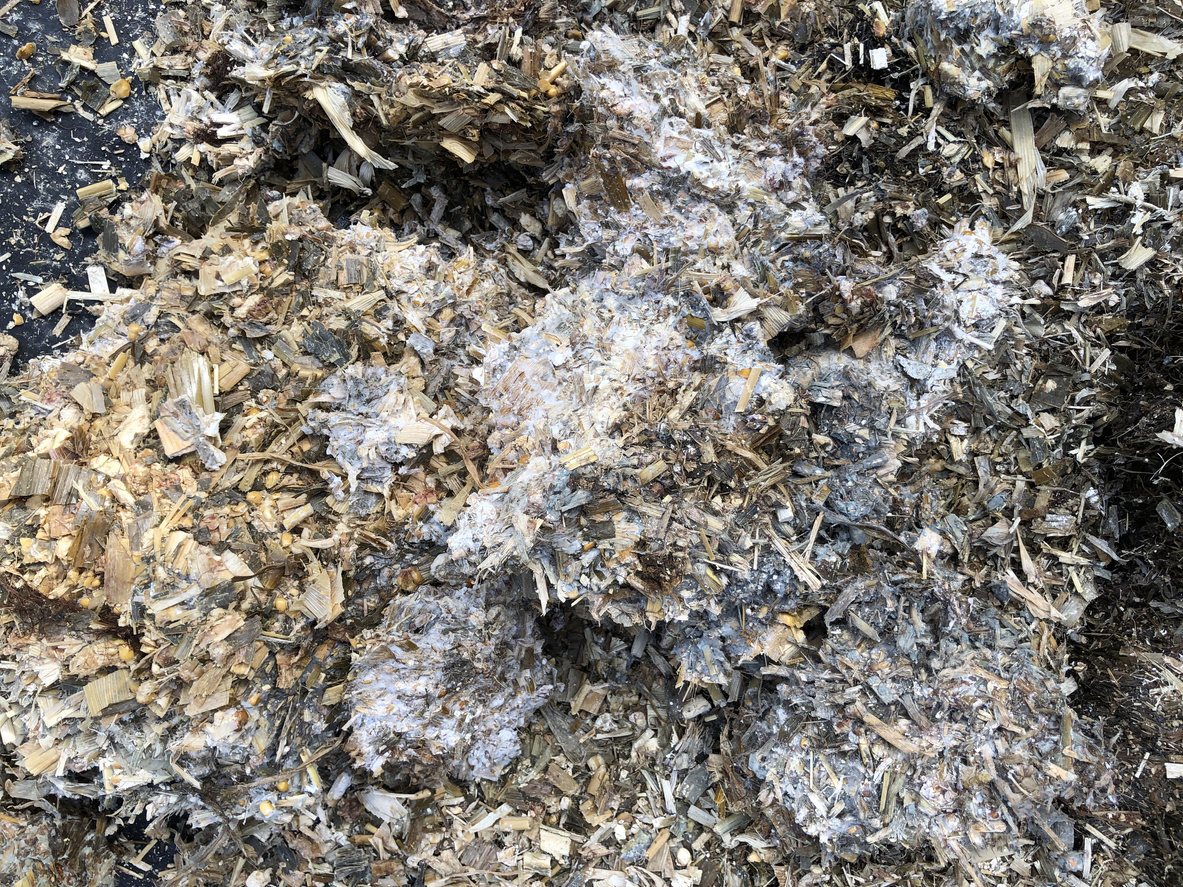Bio Stimulants
Bio-stimulants include both bacterial and fungal inoculants, various types of compost, and organic adjuvants that stimulate plant growth and improve yield. Farmers have been using bacteria inoculants containing Rhizobia bacteria on legumes and clovers like soybeans, alfalfa, and red clover for many years. Each plant has a specific Rhizobia bacteria inoculant needed to maximize nitrogen production. Rhizobia take atmospheric nitrogen and convert it to plant available forms of nitrogen in the nodules. Inoculants for soybeans and alfalfa may last 1-2 years while cover crop inoculants are short lived, lasting only 12-48 hours. Many farmers buy pre-inoculated seed but exposure to sunlight and temperatures above 500F often make them ineffective. For best results, always inoculant cover crops legumes (winterpeas, vetches, cowpeas, Sunn Hemp) and clovers (crimson, Balansa, red, sweet) at planting and buy the right inoculant species.
Other inoculants are fungal. There are over 150-250 different species of soil mycorrhizae fungi. Due to changes in farm management and the soil environment over time, many of these fungi species have disappeared. The problem for farmers is knowing what beneficial fungi species you have, which species you need, and then finding a viable source. It’s too expensive to test for all these parameters. Many companies sell mycorrhizal inoculants but many do not list the fungal specie. The easiest fungi to propagate are the Rhizophagus, unfortunately they are soil abundant, the benefits are small, and probably are not needed, so avoid buying this fungus. When using fungal inoculants use test strips with/without the inoculant and do a yield check. Valent’s Endoprime has four mycorrhizal species listed (yes one is a Rhizophagus specie) but they have a money back guarantee based on test strips with yield gains of 5-10% possible. Farmers using a soil health management system (long-term no-till plus cover crops) find that after 2-3 years they do not need to inoculant because it propagates itself in healthy soils. Farmers that do tillage may need to inoculate every year.
Other types of natural inoculants include compost. Compost inoculants contain many different types of beneficial microbes and some beneficial fungi (not mycorrhizal fungi). Compost reinoculates soils with many beneficial microbes in the tens and hundreds of thousands of species. There are two types of compost; aerobic and static compost. Aerobic compost is turned often to add oxygen and to speed up (90 days) the decomposition of organic residues. The beneficial microbes in aerobic compost can tolerate disturbance and there tends to be fewer species. In static compost, the decomposition is much slower (1-2 years) but there tends to be many more beneficial microbial species. Farmers can make their own static compost using red wiggler worms to inoculant the compost pile (Dr. Don Johnson, 2019 in New Mexico). Farmers are now adding compost to their corn and soybean seed as an inoculant to enhance plant growth and crop yield.
Beneficial bacteria tend to be gram-negative. Bacteria (especially rod-shaped bacteria and gram-negative bacteria) and actinomycetes are concentrated in the rhizosphere, the narrow region next to and around the root. Strains of the soil bacteria Pseudomonas promote plant stimulating hormones for increased growth and have anti-fungal activity on the plant pathogens Pythium and Fusarium. Over use of glyphosate (Roundup products) has caused a decline of some Pseudomonas soil bacteria (Cornell University, 2017). Planting oats as a cover crop or nurse crop stimulates beneficial microbes and may counteract glyphosate issues. Trichoderma are disease suppressing bacteria and biofertilizers which help plants effectively take up plant nutrients to promotes enhanced plant growth. Healthy soils have the same number of diseasecausing organisms as unhealthy soils, however; healthy soils tend to have more predators to reduce disease organism populations. Healthy plants can also tolerate disease organisms by outgrowing and resisting disease organisms.
Bio-stimulants also increase soil carbon. Healthy soils and healthy microbes sequester carbon better than unhealthy soils. We may soon be calling cover crops “carbon crops”. Cereal rye may add about 0.1-0.15% soil organic matter (SOM) additions per year equal to 1-1.5 tons SOM/acre or roughly sequester .5 to .75 tons carbon/acre/year. If we did that on 200 million USA acres, that would be 100-150 million tons carbon sequestered by plants and microbes. It would take 30- 50 years to add the 15 tons of soil carbon needed to increase our SOM levels by 3%. The US government may soon be paying farmers to store soil carbon.
